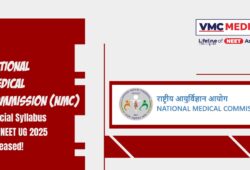Country’s Medical Seat Capacity Doubles in a Decade!
 Posted On
Posted On
203 total views, 3 views today
In a significant stride towards bolstering healthcare infrastructure, Union Health and Family Welfare Minister Mansukh Mandaviya recently disclosed remarkable advancements in the country’s medical education sector. Highlighting a substantial surge in the number of medical seats, the minister unveiled statistics that underscored the commendable progress made over the last decade. The data revealed a doubling of medical seats, with the total number of MBBS seats reaching 1,08,940 and postgraduate seats soaring to 70,674.
The Astonishing Growth:
In 2014, the landscape of medical education in India looked vastly different, with a mere 51,348 MBBS seats available. Fast forward to 2024, and the nation has witnessed a remarkable transformation, with an impressive addition of 57,592 new MBBS seats in the past ten years. The surge in postgraduate medical seats is equally noteworthy, increasing from 31,185 in 2014 to an impressive 70,674 in 2024. This exponential growth, as disclosed by Minister Mandaviya, represents a concerted effort to address the burgeoning demand for qualified healthcare professionals.
Government Initiatives:
Dr. Bharati Pravin Pawar, the Minister of State for Health and Family Welfare, revealed in a recent parliamentary session that the government’s proactive measures have played a pivotal role in this transformative journey. Through the Centrally Sponsored Scheme (CSS), the government has sanctioned 157 government medical colleges in three phases, with 108 of them already operational. Dr. Pawar emphasized that this strategic expansion of medical colleges has been a key driver behind the surge in MBBS seats, highlighting an impressive 82% increase in medical colleges from 387 in 2014 to 706 in 2023.
Examining the Numbers:
Dr. Pawar, in a written reply to the Rajya Sabha, substantiated the government’s commitment to enhancing medical education. According to the latest available data, the number of MBBS seats has surged to 1,08,848 from a modest 50,000 in 2014. This substantial increase not only indicates the government’s foresight in addressing the healthcare workforce deficit but also showcases a dedication to providing quality medical education across the nation.
Implications for Healthcare:
The unprecedented growth in medical seats is poised to have far-reaching implications for the healthcare landscape of the country. With an increased influx of medical professionals, there is a potential for enhanced healthcare delivery, especially in rural and underserved areas. The surge in postgraduate seats also signifies a focus on specialized medical fields, ensuring a well-rounded and diverse cadre of healthcare professionals equipped to meet the evolving healthcare needs of the populace.
Quality vs. Quantity:
While the surge in medical seats is undoubtedly a cause for celebration, it also raises pertinent questions about the quality of medical education. The government’s commitment to ensuring that the expansion of medical education does not compromise on quality is crucial. Striking a balance between quantity and quality is imperative to produce competent and well-trained medical professionals who can contribute meaningfully to the healthcare sector.
Global Recognition:
India’s commitment to expanding its medical education infrastructure has not gone unnoticed on the global stage. The substantial increase in the number of medical colleges and seats positions India as a formidable player in the global healthcare arena. This growth is likely to attract international attention, fostering collaborations and partnerships that can further enrich the medical education landscape in the country.
Challenges and Opportunities:
As the nation celebrates this significant milestone in medical education, it is essential to acknowledge the challenges that accompany such rapid expansion. The need for qualified faculty, state-of-the-art infrastructure, and stringent quality assurance mechanisms cannot be overstated. Simultaneously, this period of growth presents a unique opportunity to innovate, adapt, and implement best practices in medical education, ensuring that the upcoming generations of healthcare professionals are well-prepared for the challenges of the future.
Closing Thoughts:
In conclusion, the doubling of medical seats in India over the last decade is a testament to the government’s commitment to strengthening the healthcare sector. The surge in both MBBS and postgraduate seats reflects a forward-looking approach to address the evolving healthcare needs of a growing population. As the nation celebrates this remarkable achievement, it is essential to stay vigilant, ensuring that the expansion of medical education aligns with the highest standards of quality and excellence. The future of healthcare in India looks promising, with a well-equipped and expanded cadre of medical professionals ready to make a significant impact on the well-being of the nation.




